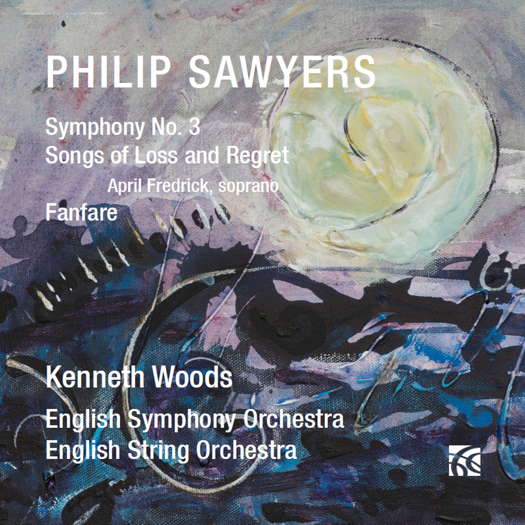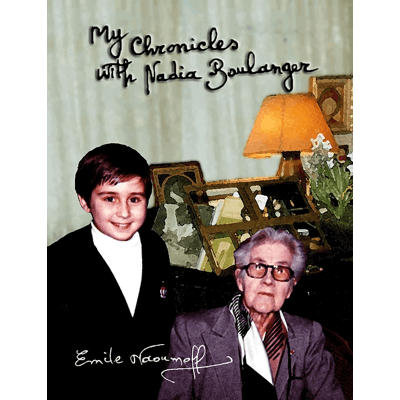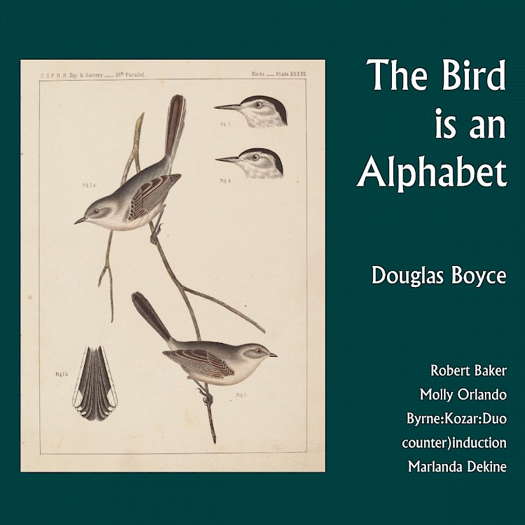 DISCUSSION: John Dante Prevedini leads a discussion about Composers, individuals or collective?, including contributions from David Arditti, Halida Dinova, Robert McCarney and Jane Stanley.
DISCUSSION: John Dante Prevedini leads a discussion about Composers, individuals or collective?, including contributions from David Arditti, Halida Dinova, Robert McCarney and Jane Stanley.
 SPONSORED: CD Spotlight. View from the Celli - Philip Sawyers' Symphony No 3 impresses Alice McVeigh.
SPONSORED: CD Spotlight. View from the Celli - Philip Sawyers' Symphony No 3 impresses Alice McVeigh.
All sponsored features >>
 PODCAST: Join Jenna Orkin, Maria Nockin, John Daleiden, Gerald Fenech, Julian Jacobson, Patrick Maxwell, Giuseppe Pennisi and Mike Wheeler for a fascinating fifty-minute audio only programme.
PODCAST: Join Jenna Orkin, Maria Nockin, John Daleiden, Gerald Fenech, Julian Jacobson, Patrick Maxwell, Giuseppe Pennisi and Mike Wheeler for a fascinating fifty-minute audio only programme.

Excavations of Meaning
JOHN DANTE PREVEDINI recommends song cycles by contemporary American composer Douglas Boyce
'... an unusual vision bravely conceived and sensitively executed by all involved.'
The Bird is an Alphabet is the recent release from New Focus Recordings of three song cycles composed by Douglas Boyce on texts by Jorie Graham, BJ Ward, Wallace Stevens, Melissa Range and Marlanda Dekine. The works are performed by Robert Baker, Molly Orlando, the Byrne:Kozar:Duo and counter)induction with Marlanda Dekine. The hour-long album is available in digital format and includes an e-booklet with notes on the pieces and an introductory essay on the theme of the album, namely the bird as a symbol of both encoded meaning and experiential transcendence. Reinforcing this metaphor is the fact that the various sections of the liner notes are headed by short inscriptions in a cryptic alphabetic script. Upon applying my own decipherment efforts, however, these appear to simply be short excerpts of poetic lines and composition titles from the album project transcribed into an invented UK-English-based phonetic alphabet.
The album opens with A Book of Songs on texts by Graham, Ward and Stevens - in three movements - for tenor voice and piano, here interpreted by Baker and Orlando. The opening movement, 'A Feather For Voltaire', features a slow and steady tenor voice line underscored by a versatile piano texture that alternates among fast ostinati in the mid-high range of the instrument, abrupt declamatory gestures in the bass and silent pauses. Harmonically, the music moves between freely atonal and diatonic sonorities with an apparent focus on the dominant seventh chord. Altogether, the movement seems to symbolically suggest a prolonged state of tension between restrained readiness to take flight and flight itself.
Listen — Douglas Boyce: A Feather For Voltaire (A Book of Songs)
(fcr387 track 1, 0:05-0:35) ℗ 2024 New Focus Recordings :
Movement two, 'The Apple Orchard in October', unfolds at a slower pace than the first and is characterized by the piano's focus on the lower-mid register, juxtaposing legato bass notes and arpeggiated staccato triads in a harmonic framework that suggests bitonality, lending the text setting a kind of uneasy resonance. Meanwhile, the vocal line reinforces this same aesthetic with dramatic effect through the incorporation of repeated notes and glissandi. Movement three, 'Cy Est Pourtraicte, Madame Ste Ursule, Et Les Unze Mille Vierges', introduces a new texture - repeated block chords in the piano - which propels the music forward with more momentum and allows the listener to hear more of a simultaneity of voice and piano than is heard in the other movements. In addition, the use of hand-muting, strumming and plucking on the piano strings lends an array of timbral surprises throughout the movement that enhance the text setting and help create a sense of sonic development for the song cycle as a whole.
This is followed by the next song cycle, Scriptorium, a setting of texts by Range in four movements for soprano and trumpet, here performed by the Byrne:Kozar:Duo. The first movement, 'Tyrian Purple', is moderately slow and quiet, showcasing the voice and trumpet in imitative polyphony through a fluid harmonic field characterized by emphasis on tritones and octaves. Here, occasional instances of the growl effect in the trumpet are used to add further harmonic color and, thus, suggest a homophonic dimension amid an otherwise polyphonic soundscape.
Listen — Douglas Boyce: Tyrian Purple (Scriptorium)
(fcr387 track 4, 0:00-0:30) ℗ 2024 New Focus Recordings :
The second movement, 'Orpiment', continues the rhythmic momentum of the first movement in a slightly faster tempo, louder dynamic and more diatonic harmonic palette. In addition, the use of higher registers in the trumpet - with and without a mute - brightens the timbral experience of the music. In movement three, 'Lampblack', the sound world established in the first two movements is rhythmically expanded through the audible use of polymeter. This is further enhanced by the juxtaposition of high registers in the slow-moving voice with low registers in the fast-moving muted trumpet. In the fourth and final movement, 'Verdigris', the music returns to a midrange tempo for voice and trumpet alike, as both reach the highest registers of their respective ranges. Here, repeated motives emerge in both voice and trumpet reminiscent of bird calls, forming a kind of imitative polyphony that is distinct from - while still strangely reminiscent of - the imitations heard in the opening movement.
The album concludes with Ars Poetica, a song cycle on poems of Dekine in nine movements, as interpreted by the guitar-violin-cello trio counter)induction with spoken-word recitation by the poet. More specifically, the song cycle consists of five movements of sung texts interspersed with four instrumental intermezzi. In the first movement, 'Wilderness', all three instruments move continuously in a medium tempo with a fluid harmonic palette blending elements of free atonality with tritone-focused harmonic centrism. The spoken word unfolds at a pace that seems to overlap with the tempo of the instruments, though in a manner rather more organic and spacious than metronomic. This is followed by the brief 'Intermezzo 1', which preserves the metrical flow of the preceding movement with a series of slightly more frenzied gestures.
In movement three, 'Returning', the instrumental tempo slows considerably, as does the texture. Here, the sonic palette is mostly monophonic and rhythmically free, though instrumental gestures seem to occasionally punctuate the speaker's syllables, suggesting more of a strict rhythmic composition in the voice. The brief 'Intermezzo 2' follows, breaking up the texture with some densely woven atonal counterpoint at a semi-brisk tempo. In this movement, the instruments play in their higher registers, lending a sonic brightness which provides a timbral contrast to the other movements as well. Next is the brief and fierce fifth movement, 'Out There', which juxtaposes percussive dissonances with stark open-strings fifths. In addition, Boyce uses significant silent pauses in the accompaniment to help give the reader a great deal of space, which proves crucial in helping the listener absorb the poem's words portraying racial injustice and police brutality.
Listen — Douglas Boyce: Out There (Ars Poetica)
(fcr387 track 12, 0:00-0:30) ℗ 2024 New Focus Recordings :
This is followed in stark contrast by the very slow and tranquil 'Intermezzo 3', which arguably feels like a brief wordless elegy in light of the preceding movement. For movement seven, 'Reclamation', the mid-tempo strings take on yet another timbral shift, here employing pizzicato for the first time in the song cycle. This pizzicato continues in 'Intermezzo 4', uniting with previously heard textures - such as slow legato strings and lyrical melodic passages - to suggest an impending summary of the cycle as a sonic experience. The ninth and final movement, 'Risk', sees the three instruments uniting in lush, sonorous homophonic textures in accompaniment to the spoken word, suggesting a kind of Baroque-style operatic lament to end the song cycle.
From the album's title and symbolic presentation to Boyce's composition of the music itself, The Bird is an Alphabet is a deceptively complex release that invites listeners to take an active role in discovering the layers of meaning hidden throughout its depths of sound and its presentation of language and symbolism. Unusually for a vocal album, the texts themselves are not present in the liner notes; the reader is instead redirected to find these on the label's website. Nonetheless, I hardly consider this a design flaw in light of everything else described here. On the contrary, it seems to me rather 'on theme', especially in light of the linguistic puzzle (the literal cryptic alphabet) that heads the sections of the liner notes. It all contributes to the experience of a final product wherein, phenomenologically, nearly every perceptible aspect of the album is a challenge of decoding laid out for the listener - one with rewards of insight awaiting those who fully commit to the journey. In conclusion, this is an album highly recommended for those with an interest in the forefront of experimental symbolism in contemporary song cycles, an unusual vision bravely conceived and sensitively executed by all involved.
Copyright © 24 January 2024
John Dante Prevedini,
Connecticut, USA



